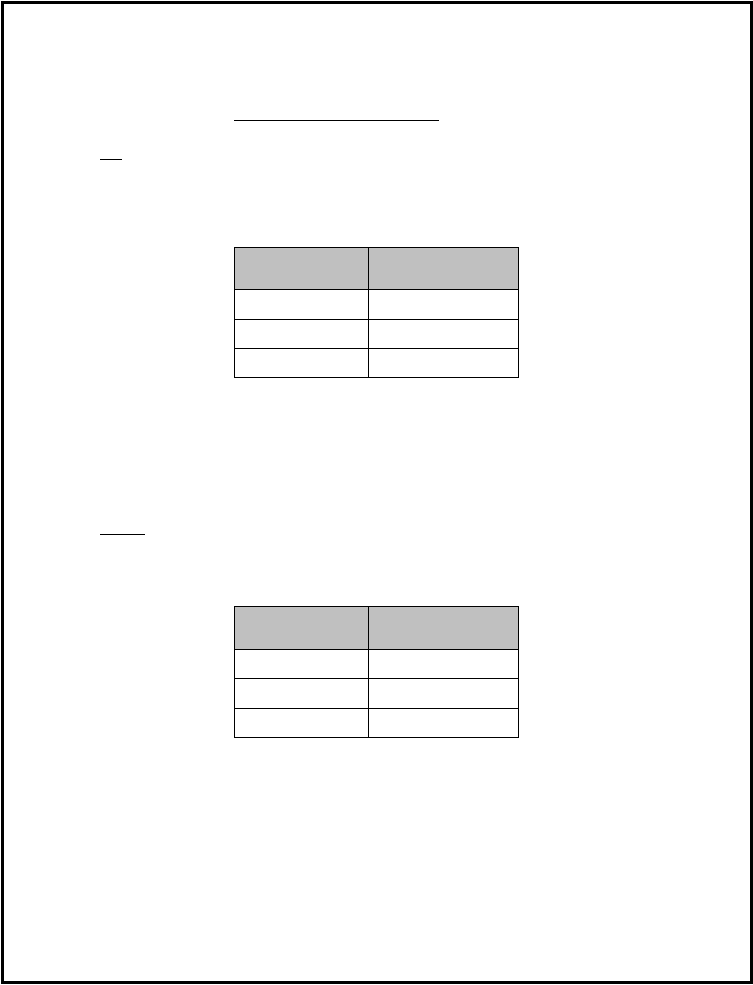
SAE J2735-Draft-Rev29 [issued: 12-11-08]
-
272 -
This is an SAE Motor Vehicle Council draft document of the DSRC committee, subject to change.
Probe Message Management: Time or Distance Periodic Snapshot Generation
The first component of the Time or Distance Snapshot Generation element is a switch indicating if
snapshot generation will be based on a time interval or distance interval.
If time is to be used the message will have the capability of changing the default snapshot intervals as well
as the speeds for these intervals:
T1 = 4 seconds at S1 = 20mph
T2 = 20 seconds at S2 = 60mph
Speed
Time Between
Snapshots
= S1
T1
>S1 & < S2
linear extrapolation
>S2
T2
Table X Table - Title Needed as per SAE style rules
This will allow applications and users to fine tune the probe data being received. For example, if this is an
urban freeway where the speeds are high but the RSUs are close together then the 20 seconds at 60mph
may be changed to 10 seconds to provide a finer geographic resolution of the data.
Additionally, an alternative method would be to enter a single time interval for T1 and T2, thus taking
snapshots at constant intervals, independent of speed, such as one per second (T1 = 1 and T2 = 1).
If distance is to be used then a similar set of parameters can be sent, but instead the times (T1 and T2) would
be replaced with distances (D1 and D2) in meters. In the same manner as the time calculation above the
distance used between speeds S1 and S2 will be linearly extrapolated. As before, two speeds (S1 and S2) can
also be set, yielding the following:
Speed
Distance Between
Snapshots
= S1
D1
>S1 & < S2
linear extrapolation
>S2
D2
Table X Table - Title Needed as per SAE style rules
This allows the operator to change the profile of the data collection policy to meet circumstances such as
incidents. For example, an incident typically causes the traffic upstream of the incident to slow, but the
downstream traffic flows fast. In this case D1 can be made small to accommodate queue measurement and
D2 made large to space out the snapshots downstream of the incident.
An allowed alternative method would be to enter a single distance interval for D1 and D2, thus taking
snapshots at constant distance intervals, independent of speed, such as once per 10 meters (D1 = 10 and D2

